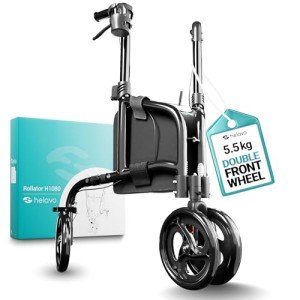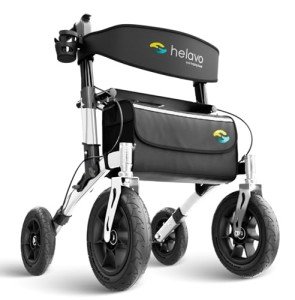5 Killer Quora Answers On Handicapped Walker
페이지 정보

본문
The Essential Guide to Handicapped Walkers: Enhancing Mobility for Individuals with Disabilities
Walking help play a vital role in enhancing the quality of life for people with handicaps. Amongst these, handicapped walkers, also called walkers or rollators, are invaluable tools that help users in preserving mobility, independence, and security. This post intends to provide a thorough summary of handicapped walkers, discussing their types, advantages, and essential considerations for users when picking a walker that best suits their requirements.
Tabulation
- What Is a Handicapped Premium Rollator Walker?
- Types of Handicapped Walkers
- Requirement Walkers
- Two-Wheeled Walkers
- Four-Wheeled Walkers
- Features to Consider When Selecting a Walker
- Benefits of Using Handicapped Walkers
- Frequently asked questions
- Conclusion
What Is a Handicapped Walker?
A handicapped walker is a mobility aid created to assist people who have difficulty walking or keeping balance due to impairments, injuries, or aging. It provides support, stability, and safety, helping users browse their environment with greater confidence and self-reliance. Handicapped walkers are available in different styles to suit different mobility obstacles, making them flexible tools for numerous people.
Kinds Of Handicapped Walkers
Understanding the different kinds of walkers is crucial for picking the ideal one. Below is a summary of the primary kinds of handicapped walkers:
| Type | Description | Ideal For |
|---|---|---|
| Requirement Walkers | Standard frame with no wheels, needing the user to lift it to move. | Individuals with stable balance. |
| Two-Wheeled Walkers | A lightweight walker equipped with 2 front wheels for easier movement. | Users requiring more mobility support. |
| Four-Wheeled Walkers | A more advanced model with four wheels, handlebars, and typically a seat. | Those requiring optimum support and rest choices. |
1. Requirement Walkers
Requirement walkers, the many fundamental variation, are constructed as a durable frame. Users lift the walker and location it forward, permitting for steady movement. This type of Medical-Grade Walker is ideal for people with restricted mobility however who keep great balance.

2. Two-Wheeled Walkers
These Helavo Rollator Walkers include two front wheels, substantially improving maneuverability compared to standard walkers. Users can press the walker instead of raising it, making it much easier to browse.
3. Four-Wheeled Walkers
Likewise called rollators, Adjustable Rollator Walker four-wheeled walkers included wheels on all four legs, making them easy to push. Numerous designs also feature a comfortable seat and back-rest, enabling users to take breaks throughout longer walks or getaways.
Features to Consider When Selecting a Walker
Before purchasing a handicapped walker, it's important to assess certain features that may enhance the user experience and safety. Here are some essential considerations:
| Feature | Description |
|---|---|
| Weight Capacity | Make sure the walker supports the user's weight. |
| Height Adjustability | Try to find adjustable handlebars for a correct fit. |
| Wheels Quality | Examine if the wheels are robust for numerous surfaces. |
| Brake System | Identify if it has a reliable braking mechanism for security. |
| Storage Options | Think about if it has a basket or bag for personal products. |
Advantages of Using Handicapped Walkers
The benefits of utilizing handicapped walkers extend beyond mobility, providing psychological and physical benefits:

- Increased Independence: Walkers allow users to move without relying excessively on caretakers or member of the family.
- Improved Safety: With improved stability, walkers considerably lower the threat of falls, contributing to a much safer living environment.
- Improved Confidence: Users typically report feeling more secure and positive when using a walker, motivating them to engage more in social activities.
- Health Benefits: Regular use of a walker can promote exercise, resulting in better cardiovascular health, enhanced muscle tone, and overall wellness.
FAQs
1. How do I know which kind of walker is best for me?
Selecting the very best walker depends upon your physical abilities and mobility requirements. Consulting with a healthcare expert or occupational therapist can provide tailored suggestions based on your particular health circumstance.
2. How should I preserve my walker?
Frequently check your walker for wear and tear, mainly concentrating on the wheels and brakes. Clean down surfaces with a wet fabric to keep it clean and shop it in a dry location when not in usage.
3. Can I use a walker on irregular surface areas?
While some walkers are better matched for unequal surface areas than others, caution is encouraged. It might be helpful to choose a walker with larger wheels for much better stability on such terrains.
4. Are there walkers designed particularly for outdoor use?
Yes, numerous four-wheeled walkers are particularly designed for outdoor usage, including bigger wheels and more robust building to deal with different terrains.
5. Do walkers come in various colors or designs?
Yes, numerous designs, colors, and styles are readily available to deal with individual choices while still fulfilling functional requirements.
Handicapped walkers are transformative help that can substantially enhance the lifestyle for people facing mobility obstacles. By comprehending the types of walkers, their features, and the benefits they use, users can make educated choices that line up with their individual mobility needs. As technology and design progress, the future of handicapped walkers guarantees even higher assistance and convenience, encouraging self-reliance and an active lifestyle for all.
- 이전글Levemir Vs. Lantus: Similarities And Differences 25.10.12
- 다음글مقایسه موتور TU5 و XU7P ؛ کدام پیشرانه انتخاب بهتری است؟ 25.10.12
댓글목록
등록된 댓글이 없습니다.
![정국토건[주]](http://jkst.co.kr/img/ci.svg)

![정국토건[주]](http://jkst.co.kr/img/ci_bt.svg)